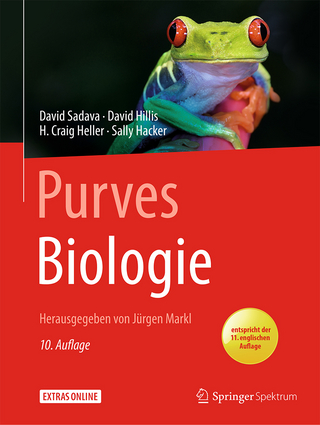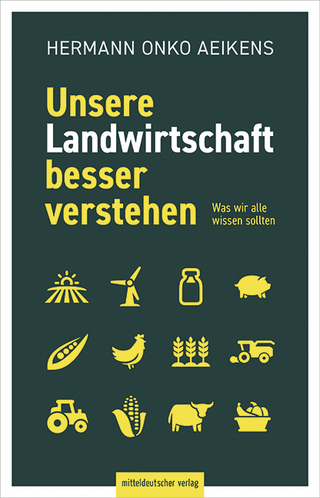
The Future of Forensic Science
John Wiley & Sons Inc (Verlag)
978-1-119-22667-3 (ISBN)
This one-of-a-kind book is a collection of content from the Past and Current Presidents of the American Academy of Forensic Sciences—providing readers with all of their forensic science experience, knowledge, insight, and wisdom. It envisions where forensic science will be a decade from now and the impact of these emerging advances on the law (along with our place in it), emphasizing theoretical advances, innovative leads from the laboratory, and emerging technologies.
Filled with information from some of the greatest forensic minds of their generation, The Future of Forensic Science covers all of the eleven sections that comprise the AAFS. It discusses new directions in forensic anthropology, and looks at the future of such disciplines as criminalistics, forensic engineering science, forensic psychiatry and behavioral science, forensic toxicology, and forensic document examination. It also touches on the current and future state of digital and multimedia sciences.
Contains contributions from an eminent group of forensic science experts
Presents a valuable repository of forensic science experience, knowledge, insight, and wisdom
Offers an insightful interdisciplinary look at the future of forensic science and how it is changing forensic science for the better
Timed to coincide with the NIST forensic science initiative and the OSAC process
The Future of Forensic Science is a must-have book for practicing forensic science professionals, academics, and advanced undergraduate and graduate students in forensic science.
This book is published as part of the AAFS series ‘Forensic Science in Focus’.
Edited by Daniel A. Martell, PhD, is a Past President of the American Academy of Forensic Sciences, and Professor at the Semel Institute for Neuroscience and Human Behavior, David Geffen School of Medicine at UCLA. He is Board-Certified in Forensic Psychology by the American Board of Professional Psychology; a Fellow of the American Academy of Forensic Psychology; a Fellow of the National Academy of Neuropsychology; and a Fellow of the American Academy of Forensic Sciences. He is also a consultant for the United Nations International Criminal Court in The Hague.
Notes on contributors xi
Series preface xix
Preface xxi
1 New directions in forensic anthropology 1
Douglas H. Ubelaker
1.1 Introduction 1
1.2 Detection and recovery 3
1.3 Determination of human status 4
1.4 Age at death 6
1.5 Time since death 7
1.6 Sex estimation 8
1.7 Ancestry 9
1.8 Living stature 9
1.9 Postmortem history 10
1.10 Positive identification 10
1.11 Foul play 11
1.12 Certification 12
1.13 Conclusion 13
Acknowledgments 14
References 14
2 Some thoughts on the future challenges to criminalistics 19
Ronald L. Singer
2.1 Introduction 19
2.2 Technological advances 20
2.2.1 Computers software and databases 20
2.2.2 DNA 21
2.2.3 Impression evidence 21
2.2.4 Instrumentation 22
2.3 Quality issues 23
2.3.1 NAS Report 23
2.4 Financial burdens 24
2.4.1 Seeking additional sources of grant funding 25
2.4.2 Staffing 25
2.4.3 Regionalization 26
2.4.4 Consolidation 26
2.4.5 Cost recovery 27
2.4.6 Privatization 28
Acknowledgments 29
References 29
3 Digital and multimedia sciences 31
Zeno Geradts
3.1 Introduction 31
3.2 History 33
3.3 Digital evidence 35
3.4 Damaged (mobile) devices 37
3.5 Multimedia 38
3.5.1 Deep learning (Hinton et al. 2006) 39
3.5.2 Camera identification 40
3.5.3 Other biometrics 41
3.6 Wearables and quantified self 41
3.7 Drones 41
3.8 Sensors 42
3.9 Geo satellites 42
3.10 Disasters/large scale incidents 42
3.11 Quality assurance 43
3.12 Challenges 43
References 44
4 A look at the future of forensic engineering science 49
Thomas L. Bohan
“The future”: a preface 49
4.1 Junk law in the courtroom 50
4.2 Forensic engineering sciences and needs of the modern world at large 55
Acknowledgments 58
References 58
5 General section history: look at two disciplines and a review of standards certifications and education 61
John E. Gerns
5.1 Introduction 61
5.2 Forensic veterinary science 62
5.3 Certification: introduction 66
5.4 Certification—ABMDI 66
5.5 Standards evolution—OSAC 68
5.6 Standard evolution—ASB 69
5.7 Education accreditation 70
5.8 Summary 71
Acknowledgements 72
References 72
6 The future of forensic science: hot leads in contemporary forensic research: Jurisprudence 73
Carol Henderson
6.1 Daubert’s history 75
6.2 The Daubert test 77
6.3 Questions raised by Daubert 77
6.4 The NAS report 78
6.5 The national commission on forensic science and the organization of scientific area committees 80
6.6 NCFS 80
6.7 OSAC 82
6.8 The path forward for judicial and legal education in forensic science 84
Acknowledgments 87
References 87
7 Forensic odontology 91
Robert E. Barsley
7.1 Introduction 91
7.2 Roles of the forensic odontologist 92
7.3 Current considerations 94
7.4 Identification by teeth 96
7.5 Dental age assessment 104
7.6 Bitemarks 105
7.7 Abuse and negligence 107
7.8 Closing 107
8 Opportunities and problems faced in forensic pathology 109
Edmund R. Donoghue
8.1 Opportunity: radiology technology and computer imaging 109
8.2 Threat: dropping forensic pathology training requirement for anatomic pathology 110
8.3 Threat: maintenance of certification could see some forensic pathologists unemployed 111
8.4 Threat: standards are becoming increasingly detailed and rigorous 112
8.5 Threat: forensic: overregulation by federal government and other entities 112
8.6 Conclusion 112
9 The future of forensic psychiatry and behavioral science 113
Richard Rosner
9.1 The BRAIN initiative 114
9.2 The law and the human mind 114
9.3 Correlation is NOT causation 115
9.4 Theories of consciousness 115
9.5 The hard problem of consciousness 116
9.6 Consciousness and the failure of the physical sciences 117
9.7 The problem of free will 118
9.8 The bottom line 119
References 119
10 The future of forensic document examination 121
John L. Sang Linton A. Mohammed and Carl R. McClary
10.1 What is a forensic document examiner (FDE)? 121
10.2 Origins of questioned document examination 123
10.3 Albert S. Osborn and the formation of the American Society of Questioned Document Examiners (ASQDE) 125
10.4 Ordway Hilton and the formation of American Academy of Forensic Sciences (AAFS) 126
10.5 Questioned documents and the formation of the International Association of Forensic Sciences (IAFS) 128
10.6 Key issues 128
10.6.1 Certification 128
10.6.2 Standardization 129
10.7 Standards of practice 132
10.8 The Daubert standard and FDE 135
10.9 How FDE meets Daubert 137
10.9.1 Standards 137
10.9.2 Error rate/reliability 138
10.9.3 Testing of basic principles 139
10.9.4 Peer review and publication 142
10.9.5 General acceptance in the forensic community 143
10.10 Research in FDE 144
10.10.1 Neuroscience 144
10.10.2 Eye tracking 146
10.11 Signature and handwriting verification systems 148
10.12 Automation in the forensic examination of handwriting 148
10.13 Current research 149
10.14 Conclusion 150
10.14.1 The public and how law and forensics will be shaped 150
10.14.2 Research 151
10.14.3 Research in other document examinations 151
References 152
Further readings 155
Measurement science and standards in forensic handwriting analysis – U.S. Commerce Department’s National Institute of Standards and Technology (NIST) Symposium June 2013 presentations 157
11 Past perspectives and future directions in forensic toxicology 159
Barry K. Logan F-ABFT
11.1 Our history 159
11.2 Reflections on factors affecting our future direction 163
11.3 Facing forward 167
11.3.1 Laboratory resources and the role of the Federal Government 168
11.3.2 Standards development and harmonization of best practices 168
11.3.3 Technology 169
11.3.4 Training research and interdisciplinary collaboration 171
11.4 Conclusion 173
Acknowledgments 174
Index 175
| Erscheinungsdatum | 30.04.2019 |
|---|---|
| Reihe/Serie | Forensic Science in Focus |
| Mitarbeit |
Herausgeber (Serie): Douglas H. Ubelaker |
| Verlagsort | New York |
| Sprache | englisch |
| Maße | 158 x 231 mm |
| Gewicht | 386 g |
| Themenwelt | Naturwissenschaften ► Biologie |
| Naturwissenschaften ► Chemie | |
| ISBN-10 | 1-119-22667-8 / 1119226678 |
| ISBN-13 | 978-1-119-22667-3 / 9781119226673 |
| Zustand | Neuware |
| Haben Sie eine Frage zum Produkt? |
aus dem Bereich


